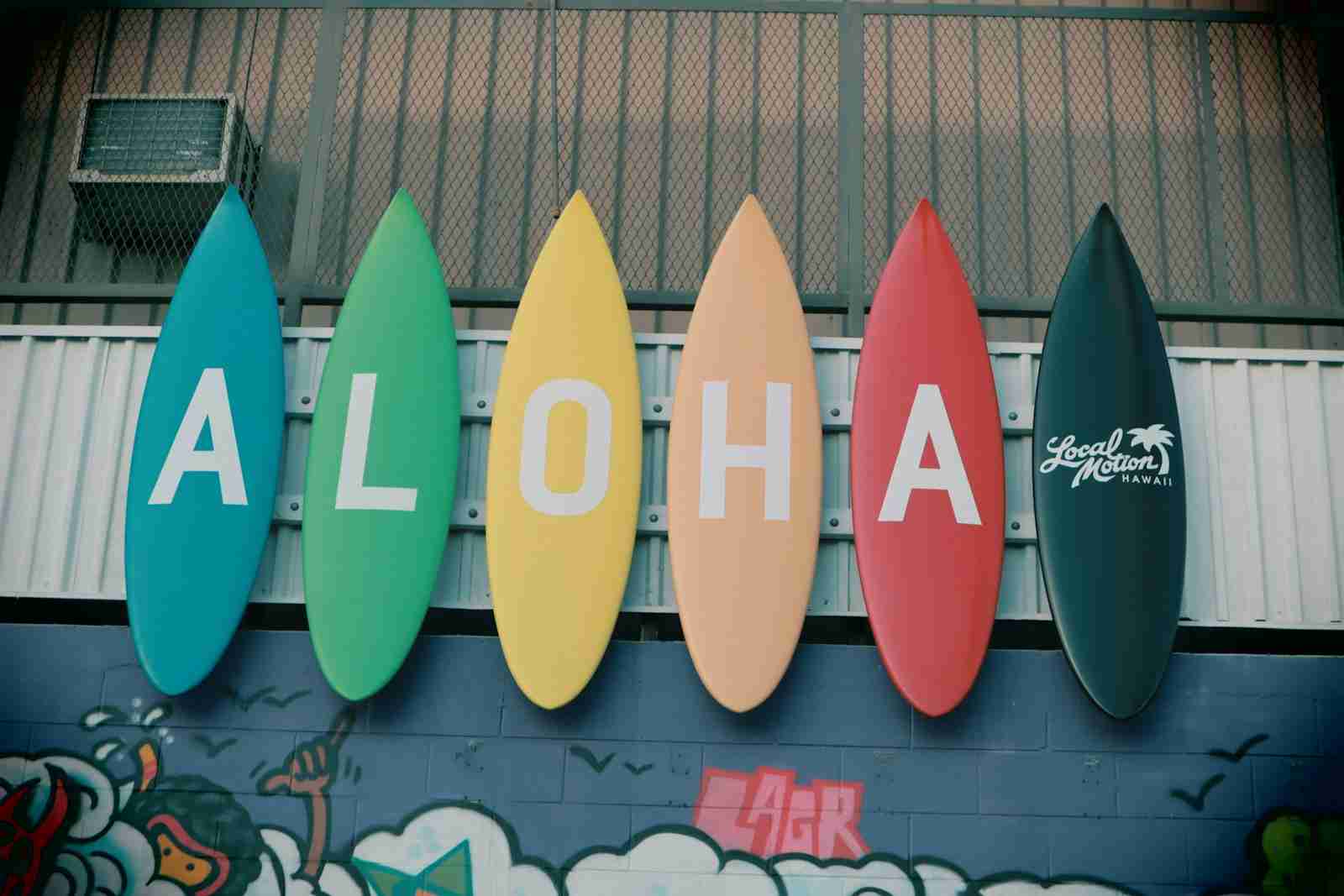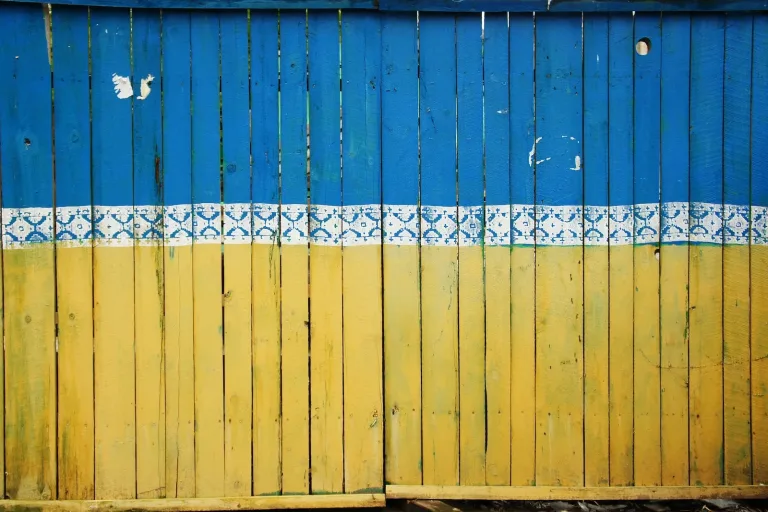22 Fun Facts About Hawaii | Aloha Adventures
1. The Hawaiian alphabet has only 13 letters.
Did you know the state of Hawaii has its indigenous language, complete with a unique alphabet of only 13 characters? These are a, e, i, o, u, h, k, l, m, n, p, w, and the ‘okina.
There are 5 vowels and 8 consonants, and even features a special character, the ‘okina, acting like a pause as in oh-oh. There’s also the kahakō, a line that lengthens vowel sounds, adding to the language’s distinct melody.
2. Japan attacked Pearl Harbor Hawaii in Dec 1941 during WWII.
On December 7, 1941, Japan unexpectedly attacked the US naval base at Pearl Harbor in Hawaii, aiming to stop the US from affecting its plans in Southeast Asia.
This event pushed the US into World War II, which concluded in 1945 after the US dropped nuclear bombs on Hiroshima and Nagasaki. Japan’s goal was to quickly weaken US naval power and secure vital resources.
3. Hawaii, the world’s rainbow capital, has full Circular Rainbows.
One of the coolest facts about Hawaii is its status as a prime spot for seeing all types of rainbows, including rare full-circle ones. Thanks to its clean air and frequent rain, especially in Kauai, rainbows are a common, dazzling sight.
In Hawaiian mythology, rainbows are seen as pathways between Earth and Heaven, making Hawaii a magical place for rainbow chasers.
4. Hawaii is the only state with a Royal Palace, the Iolani Palace.
Hawaii is home to the only Royal Palace in the United States, the Iolani Palace. Built-in 1882 by King Kalākaua, it was the heart of Hawaii’s monarchy, serving as the residence and political hub until 1893.
Located in downtown Honolulu, it is now open to the public and welcomes visitors for guided tours, symbolizing Hawaiian independence.
5. The word Hawaii comes from the native Hawaiian word Owhyhee.
The name ‘Hawaii’ might come from ‘Owhyhee,’ a native word meaning homeland. This older spelling was used in the 18th and 19th centuries, especially by explorers in the Pacific Northwest, including native Hawaiians.
Today, ‘Owhyhee’ influences names in the Pacific Northwest, linking back to Hawaii’s rich cultural heritage and its meaning as a place of origin.
6. Snakes are illegal in Hawaii.
Another unique fun fact about Hawaii is that owning or bringing snakes to the islands is illegal. This law helps protect its delicate ecosystem from invasive species. While Hawaii has no native snakes, the tiny Brahminy Blind Snake is an exception.
Strict regulations aim to prevent the introduction of potentially harmful snakes, safeguarding Hawaii’s indigenous wildlife and preserving its natural balance.
7. Hawaii has 10 of the world’s 14 climate zones.
Hawaii hosts 10 of the world’s 14 climate zones, as categorized by the Koppen Climate Classification System, all on Hawaii Island. Its tropical location and diverse topography allow for a wide range of climates.
From tropical to arid, Hawaii Island is a unique place where you can experience the majority of the world’s climates without leaving the island, thanks to the Koppen system’s classifications.
8. Surfing was invented in Hawaii.
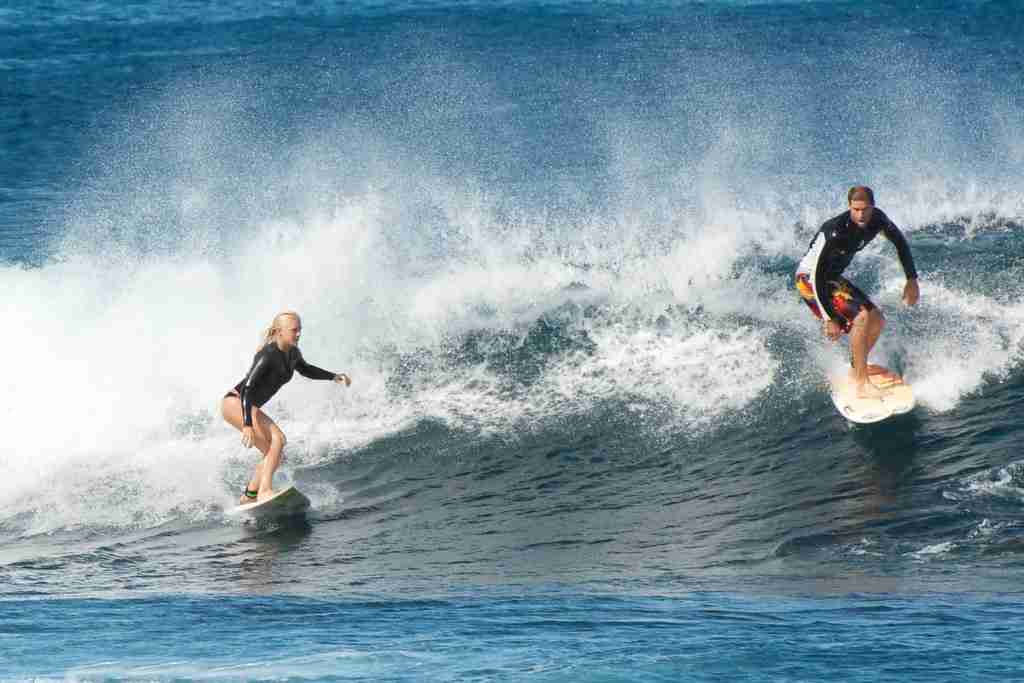
Surfing, or “he’e nalu” meaning wave sliding, was invented in Hawaii, tracing back to Polynesian culture around AD 400. Initially reserved for Hawaiian royalty, like King Kamehameha I, it was deeply rooted in society’s connection to the ocean.
Known as the Sport of Kings, surfing evolved from a significant cultural activity to the popular global sport we know today.
9. The Hawaiian Islands are the tops of gigantic underwater mountains.
The Hawaiian Islands are the visible peaks of a vast undersea mountain range, created by volcanic activity from a hotspot in the Earth’s mantle. Part of the Polynesia subregion, these islands stretch over 1,860 miles from the nearest continent.
This chain of shield volcanoes, getting younger towards the southeast, showcases the dynamic nature of Earth’s geology.
10. The Hawaiian Islands have the world’s most active volcano, Kilauea.
One of the scary facts about Hawaii is that it hosts the world’s most active volcano, Kilauea. This volcano, a key feature of the Hawaiian–Emperor seamount chain, has been erupting almost non-stop for 200 years.
Its latest activity occurred in September 2023 within the Halemaʻumaʻu crater. Kilauea, along with Mauna Loa, shapes the dynamic landscape of Hawaii Island, the archipelago’s youngest member.
11. Hawaii’s Big Island has rare green sand beaches.
Hawaii’s Big Island boasts one of the world’s rare green sand beaches, Papakōlea Beach, near South Point in the Kaʻū district. This unique beach owes its striking color to olivine crystals, known locally as Hawaiian Diamonds, from volcanic cinder cones.
Among the Hawaiian Islands’ diverse beaches, Papakōlea stands out for its rare olivine sands, contributing to the island’s colourful coastal palette.
12. Hula is a native Hawaiian dance.
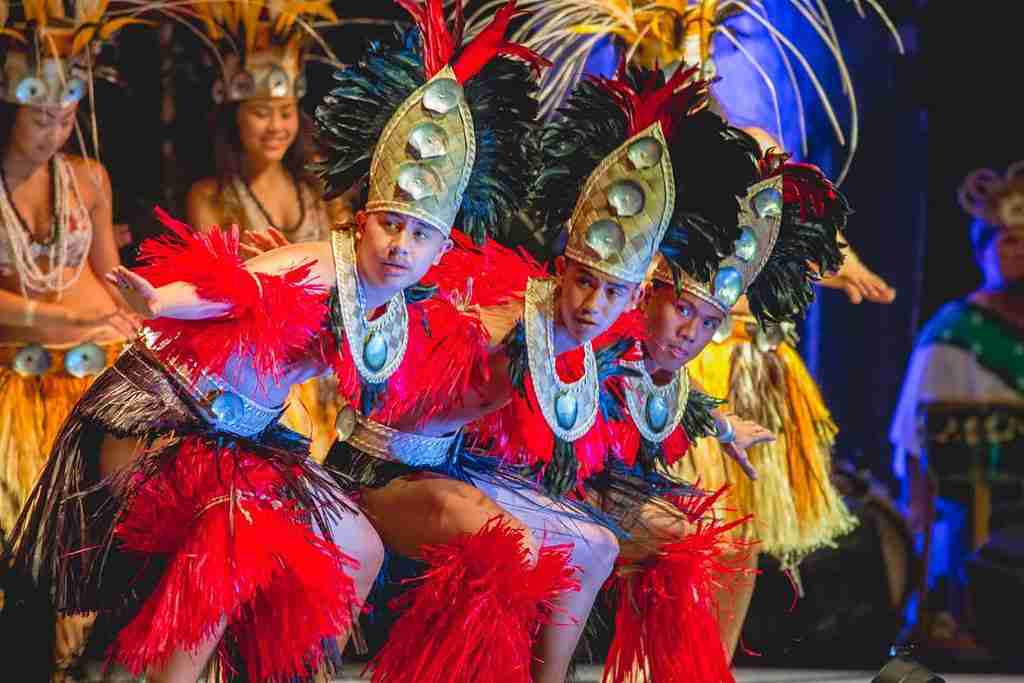
Another unique Hawaiian fact is the hula dance, a profound storytelling medium. Originating from ancient ceremonies, today’s hula, with its expressive hand movements and rhythmic footwork, narrates Hawaiian history, genealogy, and mythology.
It’s divided into Hula ʻAuana, a modern style accompanied by instruments like ukuleles, and Hula Kahiko, the traditional form, preserving the dance’s deep cultural roots. It is a complex form of communication using the dancer’s hands to tell a story.
13. Hawaii does not observe Daylight Saving Time.
Hawaii, alongside most of Arizona, doesn’t observe Daylight Saving Time due to its consistent daylight hours throughout the year. The state’s last DST change was in 1945.
Hawaii’s equatorial proximity ensures ample sunshine, eliminating the need for adjusting clocks. This means Hawaii stays in the same time zone all year round, unlike the rest of the United States.
14. Hawaii is the widest state in the United States.
Hawaii stands as the widest state in the U.S., stretching 1,500 miles from east to west. This vast archipelago, located 2,000 miles southwest of the continental U.S., holds the title of the southernmost and, after Alaska, the second westernmost state.
Despite its broad span, Hawaii shares no borders with other states, emphasizing its unique position in the nation’s geography.
15. Billboards are outlawed in Hawaii.
Hawaii, alongside Vermont, Maine, and Alaska, bans billboards to preserve its scenic beauty, as outlined in Hawaii State Legislature §445-112. This law, the first of its kind, prevents the erection and maintenance of billboards and outdoor advertising, ensuring landscapes remain unspoiled.
Recognizing the value of natural vistas for tourism, Hawaii has upheld this prohibition for over a century to promote a visually unmarred environment.
16. Hawaii is the only U.S. state made entirely of Islands.
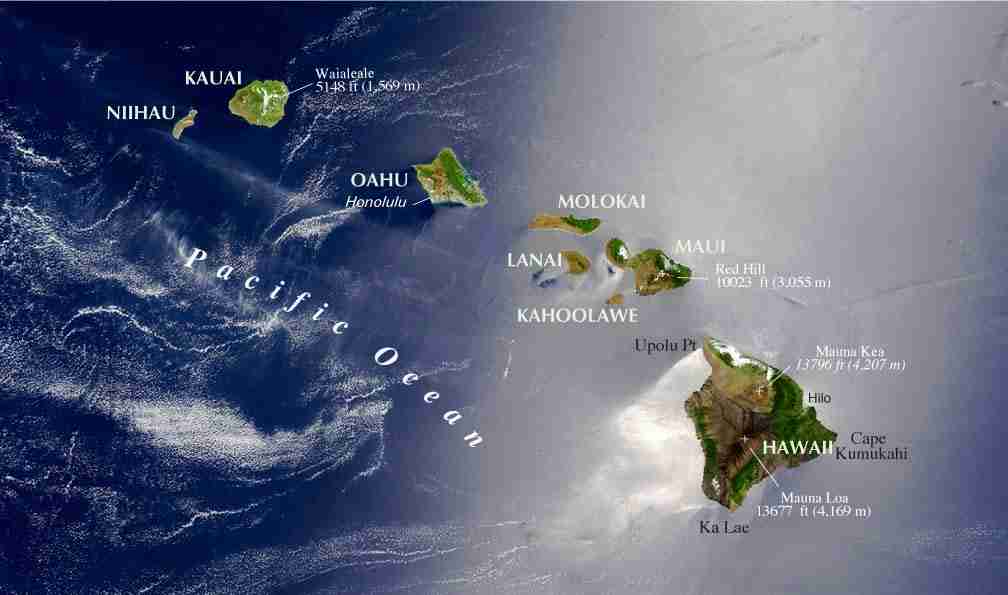
Another unique fun fact about Hawaii is that it’s the only U.S. state entirely composed of islands, making it stand out as an archipelago in the tropics and not part of the North American mainland.
Among its 132 islands, only seven are inhabited, showcasing its volcanic origins. Remarkably, it’s also the most isolated population centre on Earth, lying 2,400 miles from the mainland U.S.
17. The Hawaii state’s motto is ‘Ua Mau ke Ea o ka ʻĀina i ka Pono.’
Hawaii’s state motto, ‘Ua Mau ke Ea o ka ʻĀina i ka Pono,’ translates to “The life of the land is perpetuated in righteousness.” Coined by King Kamehameha III in 1843, it celebrated the return of sovereignty after British occupation.
The phrase, symbolizing the deep connection between the land and its people, emphasizes sovereignty and righteousness, reflecting Hawaii’s enduring spirit and values.
18. The wind blows East to West in Hawaii.
In Hawaii, the wind predominantly blows from east to west due to the Coriolis effect and Hadley Cell circulation. Known as trade winds, they’re crucial for the islands’ climate, blowing from the northeast up to 70% of the time.
These consistent winds, stronger in summer and varying in winter, have historically aided trade ships and are a defining feature of Hawaii’s weather.
19. Hawaii is getting bigger due to Volcanic activity.
Hawaii’s Big Island is expanding due to active volcanic activity, notably from Kilauea and Mauna Loa. Since 1983, eruptions have added 570 acres to its size, engulfing rainforests, communities, and historical sites in lava.
The latest Kilauea eruption alone contributed 875 acres. While other Hawaiian islands erode, the Big Island grows, continuously reshaped by its geological forces.
20. The Hana Highway in Maui Hawaii has over 600 curves.
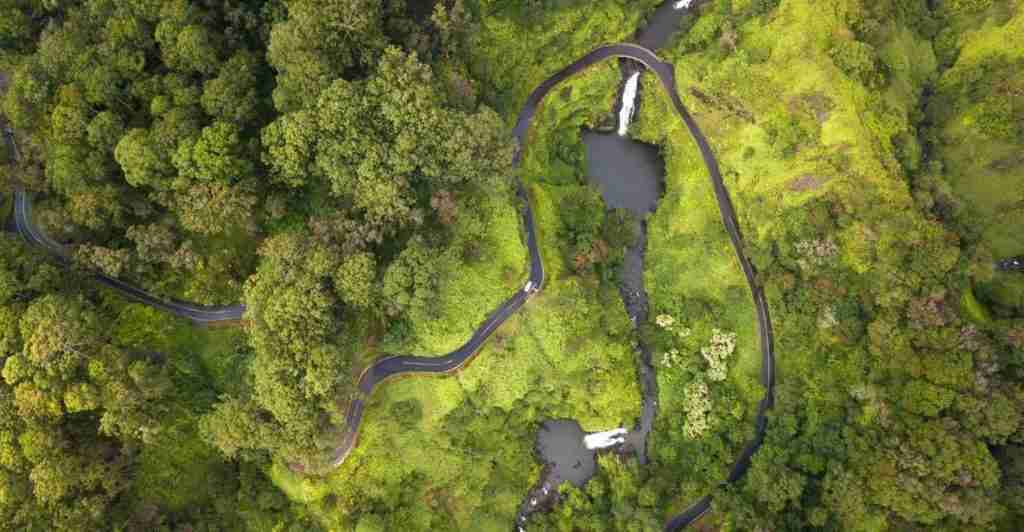
The Road to Hana in Maui, a 45-mile journey, is famous for its 620 curves and 59 historic bridges, leading travelers through breathtaking rainforests, waterfalls, and seascapes.
Dating back to 1910, these bridges traverse lush landscapes, making the drive a must-experience adventure, best enjoyed with professional guides to fully appreciate the scenic beauty and history of this iconic
21. A single person owns the Island of Lanai in Hawaii.
Another cool fact about Hawaii is the ownership of Lanai, often called the Pineapple Island due to its history as a pineapple plantation. Remarkably, 98% of this island is owned by Larry Ellison, Oracle Corporation’s co-founder, making it almost entirely privately owned.
The rest is split between the state of Hawaii and some individual homeowners, with Lanai City being the island’s notable settlement.
22. Papahānaumokuākea is the world’s largest marine protected area in Hawaii.
The Papahānaumokuākea Marine National Monument in Hawaii is the world’s largest marine protected area, spanning 583,000 square miles in the Pacific Ocean. This vast conservation zone, larger than all U.S. national parks combined, includes a rich mix of deep-sea habitats, coral reefs, and atolls.
It stands as the largest fully protected conservation area in the U.S. and a global marine sanctuary.
FAQs
Hawaii’s archipelago consists of 137 islands, but only eight are considered major: Hawaii (the Big Island), Maui, Oahu, Kauai, Molokai, Lanai, Niihau, and Kahoolawe. These islands stretch over 1,500 miles in the Pacific Ocean, showcasing diverse ecosystems and landscapes.
Hawaii is renowned for its breathtaking natural beauty, including pristine beaches, lush rainforests, and active volcanoes. It’s also celebrated for its rich Polynesian culture, iconic luaus, hula dancing, and as the birthplace of surfing, attracting visitors worldwide.
Hawaii is approximately 2,400 miles from the continental United States, located in the central Pacific Ocean. This distance makes it the most isolated population centre on the planet, contributing to its unique ecosystems and cultural heritage.
Hawaii was first settled by Polynesians between AD 300 and 600, making it one of the last places on Earth to be discovered and settled by humans. European discovery occurred in 1778 by British explorer Captain James Cook.
U.S. citizens do not need a passport to travel to Hawaii if they are flying directly from another U.S. state or territory, as Hawaii is an American state. However, a valid government-issued photo ID is required for domestic travel.

